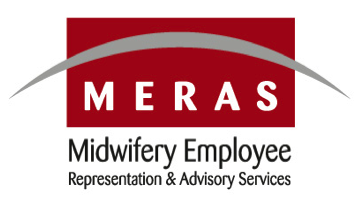MERAS members are excited that interviews for the pay equity process for DHB-employed midwives will be underway from September.
MERAS co-leader (industrial) Jill Ovens says midwives have been invited to indicate an interest in being interviewed about their work as part of the midwifery pay equity process.
Links to an on-line expressions of interest (EOI) form were emailed out yesterday by participating DHBs and need to be completed and returned by 9 September.
Jill says members are saying the form is easy to complete.
Eight DHBs were selected as interview locations, including Northland, Waitemata, Auckland, Counties-Manukau, Tairawhiti, Capital and Coast, Nelson-Marlborough and Canterbury.
“The choice of interview locations was a joint process with the DHBs aiming to include a mix of small, medium and large DHBs, rural as well as urban, those with large Maori and Pasifika populations, and those with socio-economic deprivation,” Jill says.
A sample of DHB-employed community midwives, core midwives, Maori and Pasifika core midwives, Associate Charge Midwives/Midwife Co-ordinators, and Charge Midwives/Charge Midwife Managers will be interviewed.
MERAS interviewers include Helenmary Walker (CMDHB), Sabine Weil (Waikato DHB), Victoria Christian (ADHB), Kath Boyle Capital and Coast DHB) and co-leader Caroline Conroy (CMDHB) all of whom attended a two-day training in the pay equity process, tools and techniques that will be used.
The interview process is not a statistical exercise requiring a specified percentage of interviews. Thus, it may look as if the number is small (around 60 altogether) but if more information is needed, Jill says more interviews can be conducted. Other information such as research can also be used.
A panel to include a MERAS representative in each of the participating DHBs will select interviewees from expressions of interest received from midwives who meet the agreed criteria in the above roles.
Through the one-and-a-half hour interviews, information will be gathered that is representative of the work done by midwives and will be compared with information from interviews held with the appropriate comparator groups using the same tools and techniques.
The idea is to compare midwifery with similar male-dominated occupations to establish pay differentials attributable to gender inequity. Jill says most similar occupations within DHBs are predominantly women. However, comparator groups may have been historically male-dominated with a majority of women today.
Interviews will also be held with employees from the agreed comparator groups and any differential could result in a variation to pay rates in the MERAS DHBs MECA which would be backdated to 31 December 2019.
